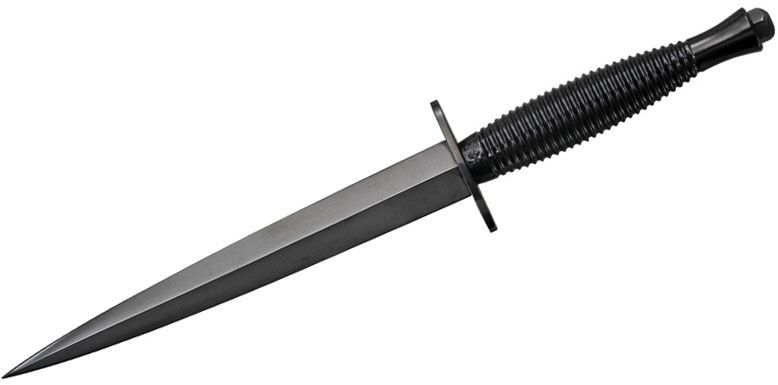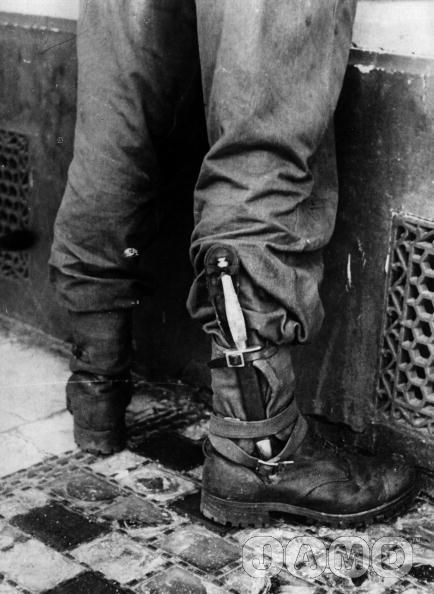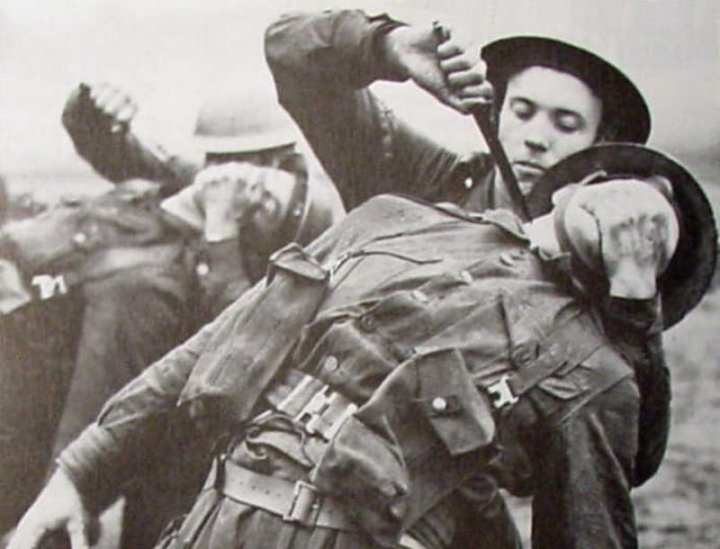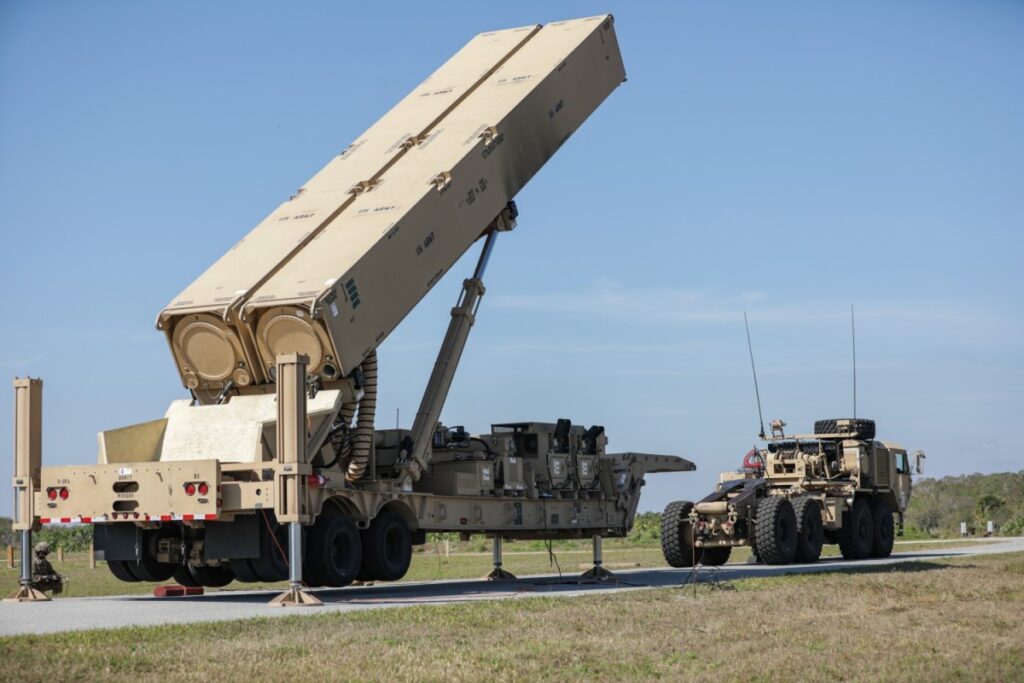The implementation of knives as military weapons has always fascinated me. They seemingly adapt and evolve much like firearms do. We have seen the famed knuckleduster trench knives, the Ka-Bar, and the subject of today’s discussion, the Fairbairn-Sykes dagger, or fighting knife as it’s properly called. The weapon not only saw widespread adoption but it influenced a wide variety of fighting knives. Today, we will dig into the knife, the designers, and the men who used it.
The designers
Fairbairn and Sykes were tough hombres. They had both served in the British military during the interwar period, and both eventually ended up as police officers in Shanghai, China. How did Brits become police officers in China? Well, they policed something known as the Shanghai International Settlement. The International Settlement used to be a British settlement, but Americans, French, Japanese, Russians, and more joined the mix over time.

In the 1930s, Shanghai was the sixth biggest city in the world and had the title of most dangerous city in the world. Organized crime ran rampant, and all manner of illicit activities occurred, including drugs, gambling, prostitution, and more. On top of that, the Chinese Nationalists and Chinese Communists clashed violently.
The Shanghai Municipal Police (SMP) operated in dangerous territory and consisted of every nationality in the settlement. Fairbairn had been stabbed, beaten, and attacked enough to learn boxing, judo, jujutsu, and more. He combined what he learned into Defendu and taught it to the SMP. Over time, he developed tactics and techniques for firearms, modern urban tactics, and even knife fighting.
He created a special unit known as the Anti-Riot team. His good friend Sykes volunteered and later commanded a team within the unit. The two decided that their current crop of fighting knives wasn’t good enough and so created the Fairbairn-Sykes dagger.
Related: Ye olde tomahawk – From the Revolution to the GWOT
The creation of the Fairbairn-Sykes dagger

When they designed the Fairbairn-Sykes dagger, the two men wanted something that could kill quickly and efficiently. They called it a killing knife, not a fighting knife. The intent was for the user to surprise the enemy with the knife and kill them quickly and without mercy.
Fairbairn described his own fighting style as ungentlemanly, and the Fairbairn-Sykes dagger exemplified that.
Fairbairn Stated in his book Get Tough,
“In close-quarters fighting there is no more deadly weapon than the knife. In choosing a knife there are two important factors to bear in mind: balance and keenness. The hilt should fit easily in your hand, and the blade should not be so heavy that it tends to drag the hilt from your fingers in a loose grip. It is essential that the blade have a sharp stabbing point and good cutting edges, because an artery torn through (as against a clean cut) tends to contract and stop the bleeding. If a main artery is cleanly severed, the wounded man will quickly lose consciousness and die.”
The weapon has a double-edged blade with a stiletto tip designed to stab quickly and precisely. At the bottom of the blade sat a distinctive S-Shaped handguard and a thin, lithe grip commonly found on fencing foils. The grip was metal, and the knife is considered grip-heavy. This was purposeful and helped when the user had a loose grip since a heavy blade may pull the knife downwards and make your grip more precarious.
The blade and tip were designed to be razor-sharp and could slide through heavy coats with ease and into the flesh of an attacker.
Related: The Nazi plan to exterminate Odessa’s Jews in WWII
The commandos

Fairbairn and Sykes both returned to their homeland in 1940. The British Army commissioned them as lieutenants. They trained the newly formed British Commandos and Special Operations Executive (SOE) agents teaching them what they called Gutter Fighting, which included hand-to-hand fighting and the implementation of the Fairbairn-Sykes dagger.
This led the British Commandos and SOE agents to adopt the knife and Wilkinson Sword Co Ltd. was contracted to produce the knife in secret. The company labeled the weapons hunting knives to ensure the Germans didn’t find out about a mass order of commando knives.
Commandos trained with the Fairbairn-Sykes dagger extensively. Fairbairn and Sykes taught them how to fight with the knife, how to draw it quickly, and to use stabs, slices, and even pommel hits to win. They also taught them how to take down an enemy sentry silently by cutting his throat or taking out his kidneys.
The weapon’s evolution

The original model, known as the Shanghai knife, features a 5.5-inch long blade. The next series is called First Pattern knives, and they feature a six-inch blade. Second Pattern knives feature a blade that is six ⅞ inches long.
The longer blade came about because of the use of bigger coats in the cold regions of Europe. The daggers needed to pass through at least three inches of coat and then still have enough blade to reach something vital.
Third Pattern knives utilize the same near 7-inch blade, but the handle uses a series of 27 rings to form the grip.
Original grips were metal and heavily textured for a good grip. Fairbairn and Sykes were apparently upset at the Third Pattern’s grip. They felt it didn’t offer a sufficient grip with wet hands and ruined the balance of the knife. However, the ringed grips were apparently less labor-intensive and easier to produce.
A life of service

The Fairbairn-Sykes dagger served the British Commandos and SOE so well that everyone wanted one. Well, most of the growing special operations and intelligence agencies wanted one. The Office of Strategic Services (OSS) saw the dagger’s value and ended up contracting their copy of the blade. Sadly, the U.S. contractor produced an inferior version, and the dagger got a poor reputation.
On top of that, the First Special Service Force received some training from Fairbairn and Sykes. This led to them developing a fighting knife known as the V-42 inspired by Fairbairn and Sykes’s weapon.
During the war, American special operation units like the Army Rangers and Marine Raiders carried the knife, but it seemed to be more of a personal purchase than a wide-scale issuing. The Fairbairn-Sykes dagger remained in service long after World War II and saw service among British, American, Canadian, and Australian special operations troops.
Knives like the Gerber Mk. 2 would be inspired by the blade, and the long history of daggers in service by special operations units can trace its lineage back to the Fairbairn-Sykes dagger. It’s a weapon designed by hard men experienced in close fighting, so it’s not a surprise the weapon proved itself in the hands of hard men who had to do rough things.





